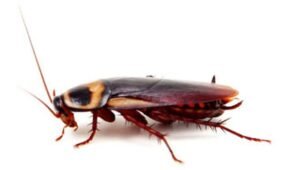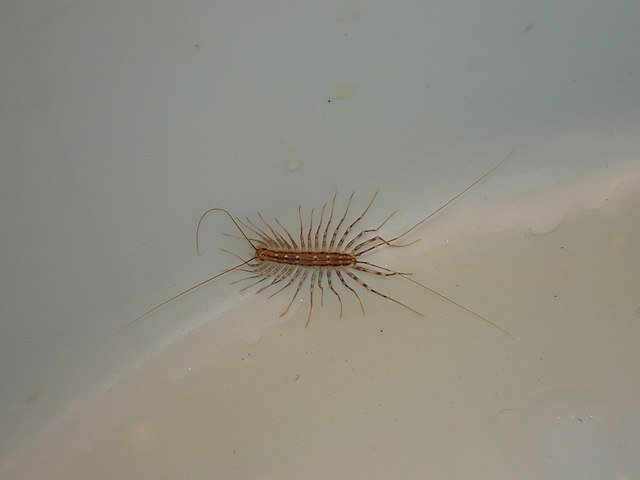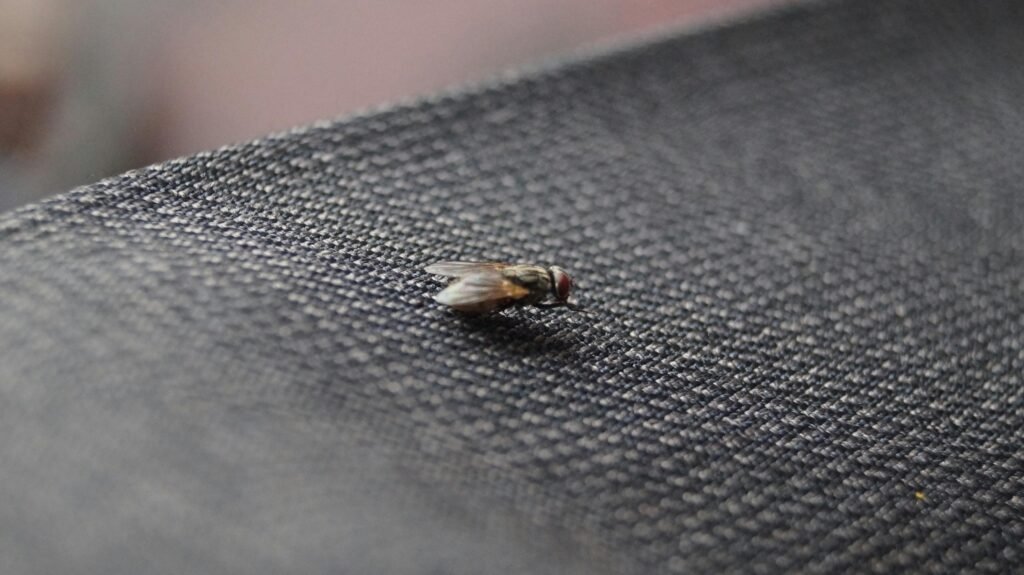German Cockroach: Identification, Risks, and Control Guide
 The German cockroach (Blattella germanica) is one of the most persistent and widespread household pests worldwide. Unlike larger species such as the American cockroach (Periplaneta americana), the German cockroach thrives in indoor environments, making kitchens, bathrooms, and restaurants its preferred habitats. Its small size, rapid reproduction, and ability to hide in the smallest cracks make it exceptionally difficult to eliminate once established.
The German cockroach (Blattella germanica) is one of the most persistent and widespread household pests worldwide. Unlike larger species such as the American cockroach (Periplaneta americana), the German cockroach thrives in indoor environments, making kitchens, bathrooms, and restaurants its preferred habitats. Its small size, rapid reproduction, and ability to hide in the smallest cracks make it exceptionally difficult to eliminate once established.
While these insects do not bite like bed bugs (Cimex lectularius) or sting like wasps (Vespula spp.), they are considered a major public health concern. They spread bacteria, contaminate food, and trigger allergies. For homeowners, renters, and business owners, infestations can escalate quickly, leading to health risks and reputational damage.
This article explores the biology, risks, and control strategies for B. germanica, offering both practical advice and deeper insight into why this species is so challenging to manage.
Identification
Knowing how to identify the German cockroach is essential for proper control.
Size: Adults measure about 0.5 to 0.6 inches (13–16 mm), much smaller than most other cockroach species.
Coloration: Light brown to tan, with two distinct dark stripes running parallel down the pronotum (the shield behind the head).
Wings: Present in both males and females, but they rarely fly. Instead, they run rapidly when disturbed.
Nymphs: Darker than adults, sometimes nearly black, with a lighter stripe down their backs.
Egg cases: Oothecae are light brown and about 6–9 mm long, often carried by the female until just before hatching. Each case contains 30–40 eggs.
Compared to the brown-banded cockroach (Supella longipalpa), German cockroaches are slightly larger and prefer high-moisture environments rather than dry areas.
Biology and Ecology
The success of B. germanica as a pest species is due to its unique biology and behavior.
Reproduction: Females produce an ootheca every 20–25 days, releasing up to 400 offspring in a lifetime. This rapid breeding makes infestations escalate quickly.
Lifespan: Adults typically live about 200 days, but under ideal conditions, populations can survive year-round indoors.
Diet: Omnivorous scavengers, they feed on food scraps, grease, starches, soap residue, and even glue.
Habitat preferences: Thrive in warm, humid environments between 85–95°F (29–35°C). Kitchens, bathrooms, and food storage areas provide perfect microhabitats.
Nocturnal behavior: They hide during the day and become active at night, seeking food and water.
Their reliance on human-provided resources makes them far more successful in urban environments than species like the oriental cockroach (Blatta orientalis), which prefers cooler, damp outdoor areas.
Global Distribution
The German cockroach is truly cosmopolitan.
North America: The most common indoor cockroach in both residential and commercial buildings.
Europe: Highly problematic in restaurants, apartment complexes, and hotels.
Asia: Widespread in urban centers where high-density housing provides ideal conditions.
Africa and South America: Present in tropical and subtropical cities, where humidity accelerates their reproduction.
Unlike the smokybrown cockroach (Periplaneta fuliginosa), which thrives outdoors, German cockroaches are fully dependent on indoor environments and rarely survive outside.
Risks and Damage
The health risks posed by German cockroaches are significant:
Disease transmission: They mechanically spread bacteria such as Salmonella, E. coli, and Staphylococcus. These pathogens are transferred from contaminated areas (garbage, drains, sewage) to food preparation surfaces.
Allergens: Proteins in their feces, saliva, and shed exoskeletons are potent allergens. Children exposed to infestations have a higher risk of developing asthma.
Food contamination: They chew through packaging and leave droppings, creating hygiene concerns in both homes and businesses.
Secondary damage: Chewing on paper, fabrics, and book bindings.
Psychological impact: Their presence often causes stress, embarrassment, and loss of reputation in food-related businesses.
While termites (Isoptera spp.) cause structural damage and mosquitoes (Culex spp.) spread diseases directly, German cockroaches represent a unique hybrid threat: persistent indoor infestation combined with indirect health risks.
Signs of Infestation
Key indicators of a German cockroach problem include:
Live sightings: Small, tan cockroaches running in kitchens or bathrooms at night.
Droppings: Small, pepper-like specks near food storage, behind appliances, or along baseboards.
Egg cases: Light brown oothecae hidden in cracks, cabinets, or under furniture.
Musty odor: A strong, unpleasant smell caused by pheromones in heavy infestations.
Shed skins: Exuviae from nymph molts found near hiding places.
Infestations spread quickly in apartment buildings, as roaches migrate between units through plumbing and electrical conduits.
Control Methods
Eradicating German cockroaches requires persistence and multiple tactics.
Sanitation:
Remove food crumbs, grease, and spills promptly.
Store food in sealed containers.
Empty trash regularly and wash recycling bins.
Exclusion:
Seal cracks and crevices in walls, cabinets, and around pipes.
Install door sweeps and window screens.
Baits:
Gel baits containing fipronil, hydramethylnon, or indoxacarb are highly effective.
Baits must be refreshed regularly to avoid resistance and drying.
Insect Growth Regulators (IGRs):
Prevent nymphs from developing into reproducing adults.
Best used in combination with baits.
Residual sprays and dusts:
Applied to cracks and crevices, not open surfaces.
Boric acid and silica aerogel are long-lasting, non-repellent options.
Advanced Approaches
German cockroach infestations often require professional expertise due to their resilience.
Integrated Pest Management (IPM): Combines monitoring, sanitation, exclusion, and targeted chemical treatments.
Resistance management: Rotating active ingredients prevents bait and insecticide resistance.
Monitoring tools: Sticky traps help identify infestation hotspots and population density.
Biological control: Research is exploring fungi (Metarhizium anisopliae) and parasitic wasps that attack cockroach egg cases.
These advanced methods are especially critical in food-handling facilities, where tolerance for infestation is zero.
Cultural and Historical Context
Cockroaches have been intertwined with human culture for centuries.
Ancient references: Cockroaches appear in early Chinese and Egyptian texts as symbols of filth and resilience.
Modern symbolism: In literature and film, cockroaches often represent decay, corruption, or survival under extreme conditions.
Scientific importance: The German cockroach has become a model species in entomology research, particularly in studies of pest control resistance.
Their presence in human history highlights the ongoing struggle between adaptation and eradication.
FAQ
Q1: Do German cockroaches fly?
No. Although they have wings, they rarely fly. They are fast runners and rely on crawling for movement.
Q2: How fast do German cockroaches reproduce?
A single female can produce 300–400 offspring in her lifetime, leading to exponential growth in just months.
Q3: Can German cockroaches survive without food?
They can survive about one month without food but only a week without water.
Q4: Are German cockroaches dangerous to pets?
They can contaminate pet food and spread bacteria, but they do not directly attack pets.
Q5: Why are German cockroaches so hard to eliminate?
Their rapid reproduction, ability to hide in tiny crevices, and growing resistance to insecticides make them extremely difficult to control.
Q6: What’s the most effective long-term solution?
Integrated Pest Management (IPM) that combines sanitation, exclusion, baits, and professional treatments.
Final Thoughts
The German cockroach (Blattella germanica) is one of the most persistent pests that humans face worldwide. Unlike outdoor cockroach species, German cockroaches thrive indoors, where warmth, food, and water are always available. Their small size, rapid breeding cycle, and ability to hide deep within cracks make them especially hard to eliminate once they gain a foothold.
For homeowners, restaurant operators, and property managers, prevention is always easier than eradication. Strict sanitation, sealing of structural entry points, and regular monitoring are crucial steps. For established infestations, professional pest management services are often the only way to achieve long-term control, using integrated methods that combine baits, growth regulators, and exclusion.
Understanding this insect’s biology is the key to controlling it. With knowledge and persistence, it is possible to break the reproduction cycle of B. germanica and reduce the risks it poses to human health.
Learn more about other Urban & Indoor Pests that affect our houses and buidings.
Disclaimer
This article is for informational purposes only. Pest control laws and approved chemicals vary by country. For best results and legal safety, we strongly recommend contacting a licensed pest control professional in your local area. Always make sure that the pest control technician is properly certified or licensed, depending on your country’s regulations. It’s important to confirm that they only use approved products and apply them exactly as instructed on the product label. In most places in Europe, UK, or USA, following label directions is not just best practice—it’s the law.
Author Bio
Nasos Iliopoulos
BSc Agronomist & Certified Pest Control Expert
Scientific Director – Advance Services (Athens, Greece)
Licensed Pest Control Business – Ministry of Rural Development & Food (GR)
References
Britannica - German Cockroaches.
Wikipedia - German Cockroach


